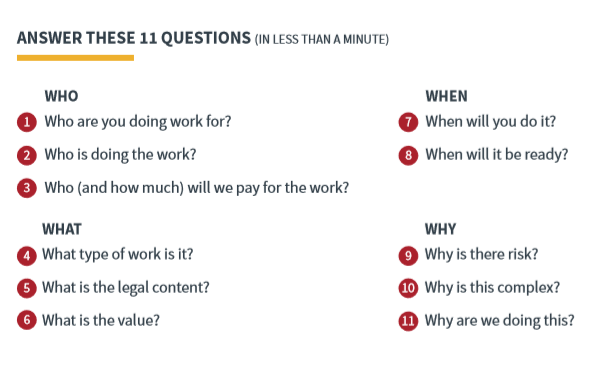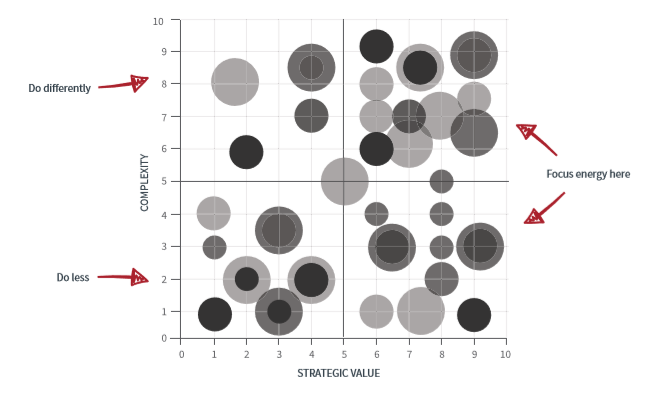The Case for In-House Legal Data Analytics
The pervasive misconceptions of being too small, too busy or not tech-savvy enough shouldn't hold a legal department back from exploring the possibilities of a data-driven legal department.
June 18, 2019 at 07:00 AM
5 minute read

At its most meaningful, legal data analytics isn't about buzzwords like Big Data or synergy or optimization—it's about improving legal departments' performance.
And it works.
According to the research firm Gartner, those who use analytics to inform their decision-making show higher work quality, reduced litigation cost and lower spending.
That said, for many legal departments' data and metrics, and the concept of collecting, analyzing and acting upon data can be overwhelming. After all, legal departments are already overworked—and that work isn't necessarily being done strategically. According to the Association of Corporate Counsel, the number of in-house counsel working more than 60 hours a week has risen by more than 50 percent; and in a FindLaw Corporate Counsel Survey, nearly half of participants said they were too busy “fighting fires” to achieve any long-term goals.
Legal departments also often lack a centralized system to track “who's doing what”—communicating with colleagues about projects, deadlines and budgets at meetings or by email. Meaning every budget query or quarterly report that should have a straightforward answer requires a deep dive, costing even more time spent searching through messages and notes or relying on each other's memories.
But a giant legal department, a background in math, science or engineering, or another batch of hours in the day is not required to deploy meaningful metrics; and these pervasive misconceptions of being too small, too busy or not tech-savvy enough shouldn't hold a legal department back from exploring the possibilities of a data-driven legal department.
Implementing a legal data analytics program will provide actionable clarity about capacity, capability and cost, making a legal team more productive, more valuable and likely much less stressed. It will arm the legal department with the capability to start quantifying and sorting work, its risk profile, complexity, resource demands and more, to make well-informed, proactive decisions. This data already exists; collating the data is not necessary; and calculations and analytics can be automated.
The most helpful and actionable intelligence to collect will lie in “who, what, when and why” metrics of a legal department. The “who” comes down to two questions: who is the work for; and who is doing the work. The “what” calls to a legal department's output (what exactly do you do around here?). The “when” answers the two key timing elements for legal departments – turnaround time and working time. Lastly, the “why” assesses the qualitative nature of work: its risk, complexity and strategic value.
The 'collect and crunch' of data can be done using spreadsheets or other online tools, whilst being mindful of consistency, both in the way information is entered and described. An alternative method is using matter management software for legal departments, that streamline the process by collecting information for each matter quickly and as part of the workflow. A matter entry form designed to ensure relevance and consistency among the data is essential.
The output can also be automated, delivering insights that you may intuitively 'guess', but with data you can rely on as 'facts.'
“Legal teams need to start managing themselves based on facts, just like the businesses we work for,” says Richard Conway, deputy group general counsel at Coca-Cola Amatil. “Having the facts, even the very basic ones, will completely change your dialogue with your business.”
Data analytics checklist:
- Determine what you want to measure.
- Find a central location where the data will reside.
- Designate an individual who will be responsible for establishing the data fields, ensuring quality control with data entry, and exporting or illustrating the data.
- Identify a leader in a position of prominence and respect to champion the data analytics project.
- Consistently collect comprehensive data – across time, across locations, across your team.
- Generate reports to start diagnosing your problems and brainstorm solutions.

The Big Picture
While better management of capacity, capability and cost is helpful within the legal department, there's another important benefit of legal data analytics: It can demonstrate the value of a legal function to a business.
According to The GC350: Benchmarking Study for the In-House Community, 44 percent of legal departments say they don't have a high profile within their companies. When asked whether they measured the value delivered to the business, 77 percent said no.
For those in the more than three-quarters of legal departments who do not measure their value whatsoever—despite their strategic importance (and despite the fact that performance bonuses can account for up to 67 percent of in-house counsel compensation, according to Barker Gilmore)—executing a smart legal data analytics program will help advocate for the legal department.
Collecting, analyzing and acting on data will address the value drivers that matter most to the C-suite and the board: legal spend, matter risk and monetary significance, and strategic importance.
KPMG's Through the Looking Glass report compiled corporate leaders' opinions about general counsel and legal departments. Their summary: “Great GCs know what is happening within the business, they understand the strategic vision and the regulatory and legal climate, and they can see the risks and opportunities around the corner. No one else on the board has this legal and business perspective.”
In-house legal departments have tremendous value: It's time to use legal data analytics to prove it.

Jodie Baker is the CEO and founder of Xakia Technologies and chair of the Australian Legal Technology Association. Xakia provides a free ebook: “In-house Legal Data Analytics for Beginners” which is available here.
This content has been archived. It is available through our partners, LexisNexis® and Bloomberg Law.
To view this content, please continue to their sites.
Not a Lexis Subscriber?
Subscribe Now
Not a Bloomberg Law Subscriber?
Subscribe Now
NOT FOR REPRINT
© 2025 ALM Global, LLC, All Rights Reserved. Request academic re-use from www.copyright.com. All other uses, submit a request to [email protected]. For more information visit Asset & Logo Licensing.
You Might Like
View AllTrending Stories
- 1Advance Auto Parts Hires GC Who Climbed From Bottom to Top of Lowe's Legal Department
- 2Judge Rules Georgia Railroad Can Seize Land as Landowners Vow to Fight
- 3On the Move and After Hours: Einhorn Barbarito; Gibbons; Greenbaum Rowe; Pro Bono Partnership
- 4On The Move: Squire Patton Boggs, Akerman Among Four Firms Adding Atlanta Partners
- 5Is the Collateral Order Doctrine About to Have a 'Brat Summer'?
Who Got The Work
J. Brugh Lower of Gibbons has entered an appearance for industrial equipment supplier Devco Corporation in a pending trademark infringement lawsuit. The suit, accusing the defendant of selling knock-off Graco products, was filed Dec. 18 in New Jersey District Court by Rivkin Radler on behalf of Graco Inc. and Graco Minnesota. The case, assigned to U.S. District Judge Zahid N. Quraishi, is 3:24-cv-11294, Graco Inc. et al v. Devco Corporation.
Who Got The Work
Rebecca Maller-Stein and Kent A. Yalowitz of Arnold & Porter Kaye Scholer have entered their appearances for Hanaco Venture Capital and its executives, Lior Prosor and David Frankel, in a pending securities lawsuit. The action, filed on Dec. 24 in New York Southern District Court by Zell, Aron & Co. on behalf of Goldeneye Advisors, accuses the defendants of negligently and fraudulently managing the plaintiff's $1 million investment. The case, assigned to U.S. District Judge Vernon S. Broderick, is 1:24-cv-09918, Goldeneye Advisors, LLC v. Hanaco Venture Capital, Ltd. et al.
Who Got The Work
Attorneys from A&O Shearman has stepped in as defense counsel for Toronto-Dominion Bank and other defendants in a pending securities class action. The suit, filed Dec. 11 in New York Southern District Court by Bleichmar Fonti & Auld, accuses the defendants of concealing the bank's 'pervasive' deficiencies in regards to its compliance with the Bank Secrecy Act and the quality of its anti-money laundering controls. The case, assigned to U.S. District Judge Arun Subramanian, is 1:24-cv-09445, Gonzalez v. The Toronto-Dominion Bank et al.
Who Got The Work
Crown Castle International, a Pennsylvania company providing shared communications infrastructure, has turned to Luke D. Wolf of Gordon Rees Scully Mansukhani to fend off a pending breach-of-contract lawsuit. The court action, filed Nov. 25 in Michigan Eastern District Court by Hooper Hathaway PC on behalf of The Town Residences LLC, accuses Crown Castle of failing to transfer approximately $30,000 in utility payments from T-Mobile in breach of a roof-top lease and assignment agreement. The case, assigned to U.S. District Judge Susan K. Declercq, is 2:24-cv-13131, The Town Residences LLC v. T-Mobile US, Inc. et al.
Who Got The Work
Wilfred P. Coronato and Daniel M. Schwartz of McCarter & English have stepped in as defense counsel to Electrolux Home Products Inc. in a pending product liability lawsuit. The court action, filed Nov. 26 in New York Eastern District Court by Poulos Lopiccolo PC and Nagel Rice LLP on behalf of David Stern, alleges that the defendant's refrigerators’ drawers and shelving repeatedly break and fall apart within months after purchase. The case, assigned to U.S. District Judge Joan M. Azrack, is 2:24-cv-08204, Stern v. Electrolux Home Products, Inc.
Featured Firms
Law Offices of Gary Martin Hays & Associates, P.C.
(470) 294-1674
Law Offices of Mark E. Salomone
(857) 444-6468
Smith & Hassler
(713) 739-1250






